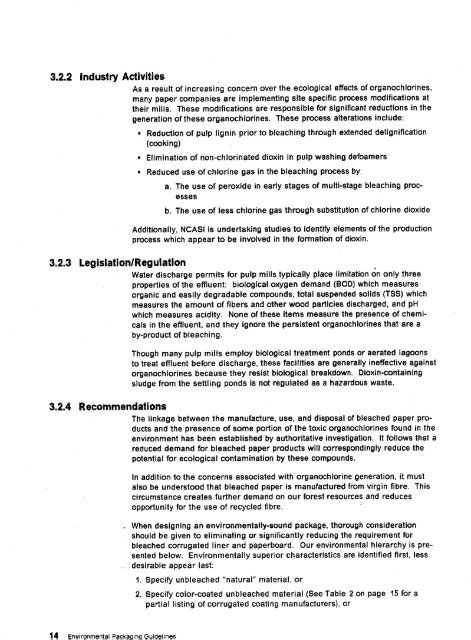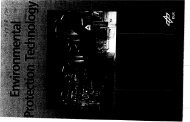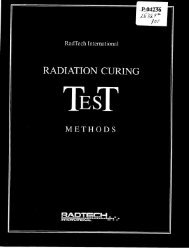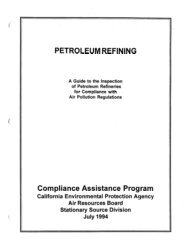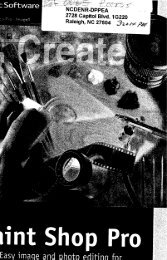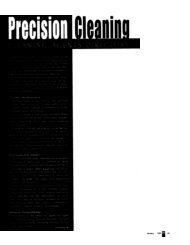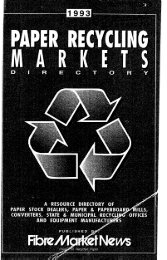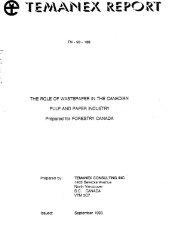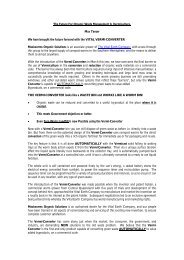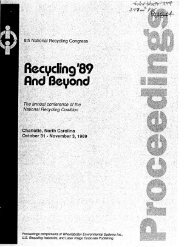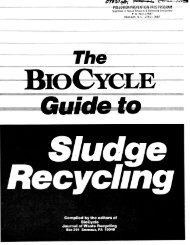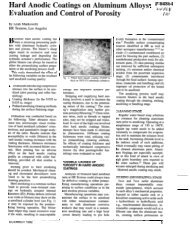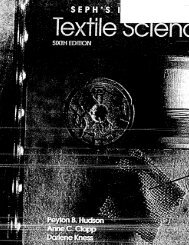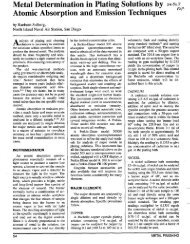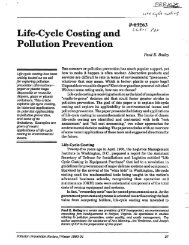Electronic Parts/Guidelines - infoHouse
Electronic Parts/Guidelines - infoHouse
Electronic Parts/Guidelines - infoHouse
You also want an ePaper? Increase the reach of your titles
YUMPU automatically turns print PDFs into web optimized ePapers that Google loves.
3.2.2 Industry Activities<br />
As a result of increasing concern over the ecological effects of organochlorines,<br />
many paper companies are implementing site specific process modifications at<br />
their mills, These modifications are responsible for significant reductions in the<br />
generation of these organochlorines. These process alterations include:<br />
Reduction of pulp lignin prior to bleaching through extended delignification<br />
(cooking)<br />
Elimination of non-chlorinated dioxin in pulp washing defoamers<br />
Reduced use of chlorine gas in the bleaching process by,<br />
a. The use of peroxide in early stages of multi-stage bleaching processes<br />
b. The use of less chlorine gas through substitution of chlorine dioxide<br />
Additionally, NCASl is undertaking studies to identify elements of the production<br />
process which appear to be involved in the formation of dioxin.<br />
3.2.3 LegislatlonlRegulation<br />
Water discharge permits for pulp mills typically place limitation on only three<br />
properties of the effluent: biological oxygen demand (BOD) which measures<br />
organic and easily degradable compounds, total suspended solids (TSS) which<br />
measures the amount of fibers and other wood particles discharged, and pH<br />
which measures acidity. None of these items measure the presence of chemicals<br />
in the effluent, and they ignore the persistent organochlorines that are a<br />
by-product of bleaching.<br />
Though many pulp mills employ biological treatment ponds or aerated lagoons<br />
to treat effluent before discharge, these facilities are generally ineffective against<br />
organochlorines because they resist biological breakdown. Dioxin-containing<br />
sludge from the settling ponds is not regulated as a hazardous waste.<br />
3.2.4 Recommendations<br />
The linkage between the manufacture, use, and disposal of bleached paper pro-<br />
ducts and the presence of some portion of the toxic organochlorines found in the<br />
environment has been established by authoritative investigation. It follows that a<br />
reduced demand for bleached paper products will correspondingly reduce the<br />
potential for ecological contamination by these compounds.<br />
14 Environmental Packaalna <strong>Guidelines</strong><br />
In addition to the concerns associated with organochlorine generation, it must<br />
also be understood that bleached paper is manufactured from virgin fibre. This<br />
circumstance creates further demand on our forest resources and reduces<br />
opportunity for the use of recycled fibre.<br />
When designing an environmentally-sound package, thorough consideration<br />
should be given to eliminating or significantly reducing the requirement for<br />
bleached corrugated liner and paperboard. Our environmental hierarchy is presented<br />
below. Environmentally superior characteristics are identified first, less<br />
desirable appear last:<br />
1. Specify unbleached “natural” material, or<br />
2. Specify color-coated unbleached material (See Table 2 on page 15 for a<br />
partial listing of Corrugated coating manufacturers), or


